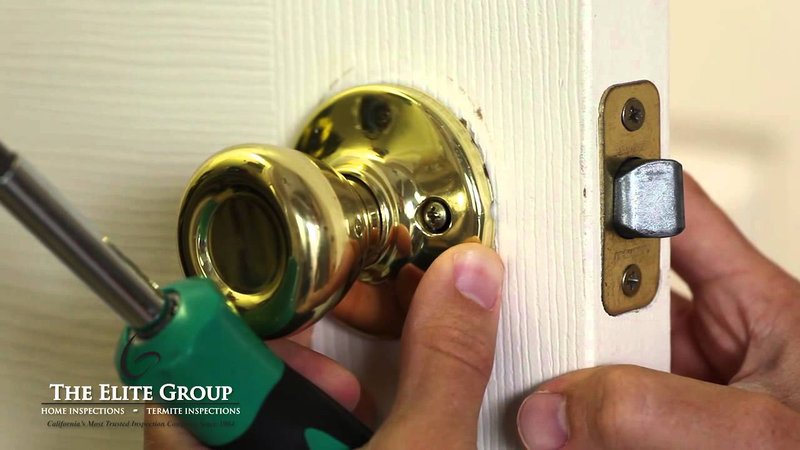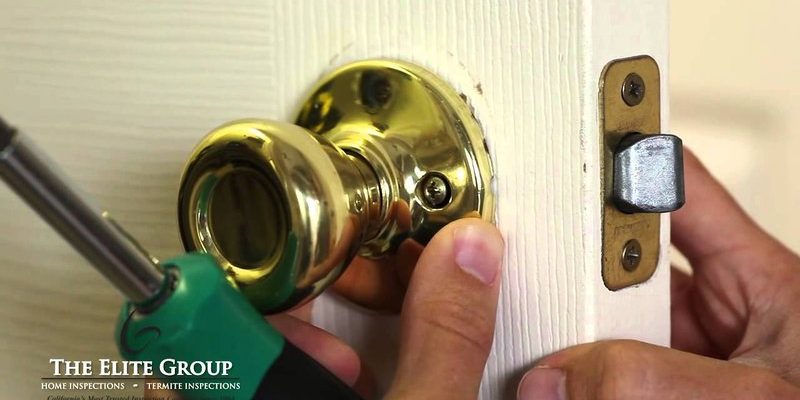
So, let’s dive into the world of door latches and how to fix one that’s too loose. Whether you have a standard door latch or a more specialized one from brands like Schlage or Kwikset, knowing how to address this issue can save you from unnecessary drafts and make your home feel cozier. Let’s roll up our sleeves and explore the steps.
Understanding the Problem: Why Your Door Latch Is Too Loose
Before we jump into fixing things, it’s helpful to understand the root of the problem. A loose door latch often means that the latch bolt isn’t aligning properly with the strike plate on the door frame. This misalignment can be caused by a few factors, including:
- Wear and tear: Over time, hinges can sag, leading to misalignment.
- Improper installation: If the latch was installed incorrectly initially, it may not fit snugly.
- Temperature changes: Wood can expand or contract with temperature changes, affecting the door’s fit.
Understanding these issues can help you not just fix your current problem, but also prevent future hassles. Think of it as understanding the symptoms before treating the illness.
Tools You’ll Need for the Repair
Having the right tools on hand can make this process smoother. Here’s a list of what you’ll typically need:
- Phillips screwdriver: Most door latches are secured with screws that require this type of screwdriver.
- Flathead screwdriver: This can help you pry open or adjust certain parts if needed.
- Chisel: If you find the strike plate needs adjusting, a chisel can be handy.
- Measuring tape: Ensuring everything is aligned is crucial, so measuring helps.
Having these tools ready will make your repair job easier and faster, allowing you to return to enjoying a cozy, well-sealed door in no time.
Adjusting the Strike Plate
Sometimes, all you need to do is adjust the strike plate—the metal piece attached to the door frame where the latch fits into. This can cause the latch to not engage properly if it’s installed too far away. Here’s how you can adjust it:
1. Unscrew the strike plate: Use your Phillips screwdriver to remove the screws holding the plate in place.
2. Realign the plate: Move it slightly closer to the door latch. Use your measuring tape to ensure it aligns properly.
3. Reattach the plate: Once it’s in the right position, screw it back into place.
Adjusting the strike plate can often resolve misalignments, restoring that snug fit and making your door feel more secure.
Tightening the Latch Mechanism
If the latch itself is loose, it might need a little tightening. Here’s how to do it:
1. Remove the latch: Use your Phillips screwdriver to unscrew the latch from the door.
2. Inspect for damage: Check the screws and the latch mechanism for any signs of wear or damage. If everything looks good, continue to the next step.
3. Tighten the screws: Often, screws can simply become loose over time. Tighten them firmly but be careful not to strip the screws.
4. Reinstall the latch: Place it back into the door and secure it.
This straightforward approach can make a big difference. A tight latch ensures a solid seal and helps keep your home comfortable.
Replacing the Latch or Strike Plate
If you find that the latch or strike plate is damaged beyond repair, consider replacing them. Here’s what to do:
1. Purchase a compatible latch or strike plate: Make sure it matches your door’s specifications. Brands like Schlage or Kwikset often have replacement parts available.
2. Remove the old parts: Unscrew the damaged latch or plate, and take it out carefully.
3. Install the new parts: Follow the manufacturer’s instructions for installing the new latch or strike plate, ensuring everything aligns correctly.
Replacing faulty components can drastically improve the effectiveness of your door latch, ensuring it seals well and does its job.
Checking the Door Frame and Hinge Alignment
Sometimes, it’s not just the latch that’s at fault; the entire door frame or hinges could be the culprits. Here’s how to check for this issue:
1. Inspect the hinges: Look for any sagging or screws that are loose. Tighten any loose screws, as this can help pull the door back into alignment.
2. Adjust the hinges: If the door is sagging, you might need to shim the hinges. This means placing small pieces of wood or cardboard behind the hinge to lift the door slightly.
3. Test for alignment: After making adjustments, close the door to see if it seals better.
Adjusting the door frame or hinges might take a little time, but ensuring everything is aligned can lead to a well-sealed door that functions properly.
Preventing Future Issues
Once you’ve fixed your loose latch, it’s smart to take a few preventive steps to keep everything in check. Here are some tips:
- Regular maintenance: Check the latch and strike plate every few months to ensure they remain tight and aligned.
- Keep hinges lubricated: A little bit of oil can prevent rust and keep the door moving smoothly.
- Monitor temperature changes: Be mindful that extreme weather can affect your door’s fit. Adjust as necessary.
By taking these simple steps, you can maintain a snug closing door that seals properly against drafts and intruders.
Final Thoughts on Fixing a Loose Door Latch
Taking the time to fix a door latch that’s too loose can lead to a more comfortable home environment. Not only does it help keep drafts out and your energy bills down, but it also offers peace of mind knowing your home is secure. With just a few tools and some basic adjustments, you can tackle this problem yourself.
So grab your tools and get started. It’s often easier than you might think! Keeping your door in top shape not only feels good but also protects your space from the elements and unwanted visitors. Happy fixing!
